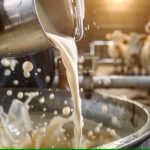
Amid growing concerns about the quality of milk entering Kerala from Karnataka and Tamil Nadu, it has been revealed that the state’s milk inspection system is falling short. Currently, only the Aryankavu check post in Kollam and the Meenakshipuram check post in Palakkad operate 24-hour quality checks. Elsewhere, milk is supposed to be tested at district-level quality control labs but this rule is reportedly not being followed.
As per guidelines, a 200 ml sample of questionable milk should be taken to district-level labs located in the offices of the Deputy Director for testing. However, there are growing concerns that inspections are ineffective, as tests are conducted only after the milk has been sold in the market. Tanker lorries carrying between 15,000 and 20,000 liters of milk are frequently crossing the borders without thorough inspections. Many milk distribution companies in Kerala are sourcing milk from neighbouring states, motivated by its higher fat content. This practice increases significantly during Onam, with five to six times the normal quantity of milk crossing the border.
According to the Dairy Development Department, food safety officials collect milk samples from the market, which are then tested in analytical labs. They also assert that mobile food testing labs are active. However, these efforts are minimal, as most tests occur after the milk reaches consumers. Temporary labs have been set up at some border check posts by the Dairy Development Department and the Department of Food Security but a permanent inspection system has yet to be established across all 12 districts.
In a shocking incident in 2022, urea was detected in 12,750 liters of milk brought from Tamil Nadu into Idukki. Adulteration, particularly to boost fat content, is a major issue, with palm oil being the most common additive. This is due to the fatty acid profile of palm oil closely resembling that of milk fat.
You can now read the most important #news on #eDairyNews #Whatsapp channels!!!
🇮🇳 eDairy News ÍNDIA: https://whatsapp.com/channel/0029VaPidCcGpLHImBQk6x1F

















